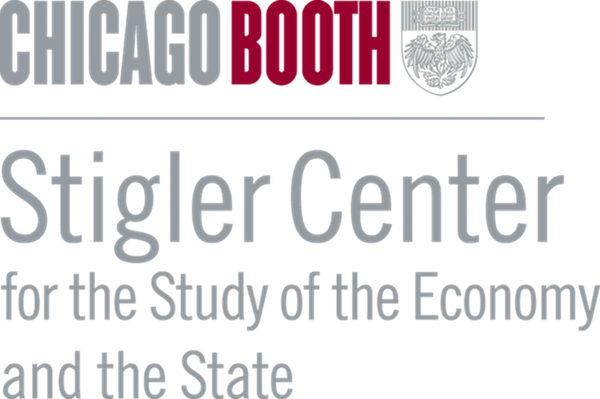Gus Hurwitz explores the tenets of conservative antitrust under the second Trump administration and why it is unlikely to establish a lasting influence.
This article is part of a symposium that explores the meaning and future of a conservative antitrust based on the writings and policies of the antitrust enforcers in the second Trump administration. You can read the contributions from Rebecca Haw Allensworth, Thomas Lambert, Gus Hurwitz, Christopher Sagers, and Aviv Nevo as they are published here.
Elsewhere in this series, Thom Lambert has looked at recent statements by Assistant Attorney General Gail Slater of the United States Department of Justice, Federal Trade Commission (FTC) Chairman Andrew Ferguson, and Republican FTC Commissioner Mark Meador to identify and critique their understanding of “conservative antitrust.” I initially planned to take a similar approach, but Lambert has covered this ground better than I would have. I will instead focus more on where conservative antitrust is going—or not going, as the case may be. I will focus first on defining the dimensions of this new conservative antitrust—or, as Thom rightly calls it, “New Right” antitrust. Following Meador’s recent appearances, I think it is best understood as the application of antitrust to achieve populist ends. Unlike the Neo-Brandeisian approach to antitrust of the previous administration, which coupled concerns about market concentration with concerns about democratic outcome such that antitrust became a lens through which all political disagreement could be seen, this does give the new antitrust flavor an identifiable limiting principle that was sorely lacking during the Biden years. But ultimately, I argue that this limiting principle is insufficient to chart a viable path forward.
In the second part of the article, I outline three challenges that lie ahead for conservative antitrust. First, while “populism” is a limiting principle, it nonetheless lacks definition. Its proponents advocate a more forceful use of antitrust law to pursue what they view as legitimate, but tailored, ends. But as they start to make use of this power, it will fast become apparent that the promised tailoring is elusive. Second, many of conservative antitrust’s targets, which may have been out of favor with President Donald Trump during his first term, are now viewed with favor by that same president. This certainly includes Big Tech, and it might include other industries of newfound strategic importance to an America First agenda in an era of renewed global competition, tariffs and inflation. And third, this latest effort to embrace an expansive understanding of antitrust law will likely be rejected or contained by the courts—the same fate that has met every past effort to give antitrust laws a scope that is not largely constrained by consideration of economic tradeoffs.
What is conservative antitrust?
Before turning to the challenges I see ahead for the Trump administration’s approach to antitrust—be it conservative or otherwise—I will need to describe what it is that I am critiquing. Here, I will draw from Lambert’s summary and then offer some additional thoughts.
As Lambert notes, what he calls New Right antitrust shares some features with traditional conservative antitrust. There seems to be a continued commitment to some form of the consumer welfare standard and its emphasis on prices and output, concern about corporations abusing market power to rent seek, and a preference for ex post enforcement (remedying illegally anticompetitive behavior and its consequences after it has occurred) over ex ante rulemaking (establishing rules to try to preclude such behavior from arising in the first place).
At the same time, the New Right approach has features that rhyme with, if not outright echo, Neo-Brandeisian views. For instance, it has an overtly populist focus on labor issues and support for small businesses. These views express a preference for ensuring individuals have an opportunity to participate in the market over ensuring that the market performs well for all consumers (Lambert notes Slater’s citation to Treasury Secretary Scott Bessent: “[a]ccess to cheap goods is not the essence of the American dream”). “Private tyranny” is equated with government power, although the New Right might draw this concern as much from stories of Big Tech censoring conservatives as from Neo-Brandeisian concerns that excessive market power has corrosive effects on democracy.
Meador has offered the most developed presentation of his views, including most recently in conversation with Daniel Francis at New York University and in his remarks at the 13th Bill Kovacic Antitrust Salon. Four things stick out in these remarks.
First, he emphasizes his view that traditional conservative antitrust is overly concerned with avoiding false positives, i.e., more concerned about a regulatory intervention into anticompetitive behavior that turns out not to be anticompetitive than vice versa.
Second, he rejects the judicial gloss on the Sherman and Clayton Acts, arguing instead for a textualist understanding of the antitrust laws that focuses on the plain meaning of words as used by Congress at the time the laws were enacted. Much of this judicial gloss limits the remit of these acts and thus the discretion of the antitrust agencies.
Third, Meador rejects the Borkian understanding of the consumer welfare standard which began to guide antitrust enforcement in the late 1970s. He would focus instead solely on consumer surplus, rejecting the relevance of producer (or total) welfare and efficiency claims that Robert Bork included in his version of the standard.
Fourth, and perhaps synthesizing all of the above, Meador argues that there is “no populism without antitrust.” This, I think, gets us to the heart of what New Right antitrust is all about. As he recently remarked:
Over the past several decades, Americans have had less and less control over their economic lives. Issues that affect them [. . .] are, increasingly, decided in faraway corporate boardrooms. Those decisions are made with spreadsheets and earnings reports in view, not real people. They’re made on the basis of corporate bottom lines.
It wasn’t always this way. This dehumanization of economic life is happening because, all around the country and the world, the size and power of the largest companies have ballooned to unprecedented levels [. . .]
[A]ntitrust enforcement is one of the most powerful, economy-wide tools available for addressing this problem—for helping restore dignity and freedom to working people who’ve felt powerless against the seismic economic forces that steer our national economy.
Putting aside whether this account is correct, it should be noted that more than a century ago German social theorist Max Weber gave name to the idea that in a capitalistic society hydraulic forces trap citizens in an “iron cage” of economic efficiency. Today arguably feels different only because modern technologies and media amplify, and allow individuals to amplify, their dissatisfaction with the human condition. And it does offer a target for the New Right’s antitrust mission. To wit: prioritizing antitrust enforcement actions that will rehumanize economic life. That is, as Meador has argued, using antitrust law to advance a populist agenda. Indeed, as one of Weber’s near-contemporaries noted, what the dehumanizing development of modern industry produces, above all, is a working class that will, inevitably, be modern industry’s own gravediggers.
The challenges of conservative antitrust
Every antitrust enforcer necessarily exercises discretion over which cases to bring, which policies to pursue, and how best to advance them. Focusing antitrust law on populist issues is certainly a coherent approach to making these decisions. But I expect that it is not one that will achieve the intended goals.
I see three challenges that lie ahead for conservative antitrust. First, it lacks definition. Second, it is beholden to the current president, and many of the targets of conservative antitrust are now viewed with favor by that same president. And third, this latest effort to embrace an expansive understanding of antitrust law has been and likely will be rejected or contained by the courts—the same fate that has met every past effort to expand the remit of the antitrust laws and the powers of the antitrust agencies.
A first challenge that the new conservative antitrust faces is its lack of definition. “Populism” is very much in the eye of the beholder. Slater laments the forgotten consumer, the forgotten laborer, and the (presumably also forgotten) small business. But higher wages for workers come at the expense of lower prices for consumers and higher costs for businesses, big and small. Lower prices and more variety require scale that small businesses cannot achieve by definition. A vibrant main street of small businesses means inconvenience for consumers and precarity for laborers. Whose populism do we defend?
We have seen this play out in the Google Search case: whereas Judge Amit Mehta was able to find liability, a remedy to address it was harder to craft. We have seen this play out with the New Right’s re-embrace of the Robinson Patman Act as a tool to protect small businesses against supplier price discrimination. As Meador noted in his statement accompanying the FTC’s (very much correct) dismissal of the prior FTC’s RPA complaint against Pepsi Co.: “A key element of any RPA claim is proving discrimination between [similarly situated] competing buyers.” But using the RPA to help small businesses compete against larger businesses by ensuring them access to comparable wholesale prices is inherently unavailing, unless you assume away distinctions between customers in different sales channels.
In the world of New Right antitrust, the answer to “whose populism do we defend” is most likely provided by the president. An important feature of antitrust in this administration is its chief enforcer’s embrace of the unitary executive—both as a theory and as a man. All operations of the executive branch are realigned to serve the idiosyncratic goals of the president. This poses a second substantial challenge to this approach to antitrust.
The best example of this is, again, the Google Search case: despite the DOJ’s efforts to get a structural remedy in the case, Trump seems pleased with the lesser result. Indeed, in congratulating Google CEO Sundar Pichai on the outcome, the president gave up credit for having initially brought the case in his first term, saying instead that “Biden was the one who prosecuted that lawsuit, you know that, right?”
More generally, aggressive antitrust enforcement against Big Tech has been a defining issue for New Right antitrust enforcers. “Hold[ing] Big Tech Accountable” was a top priority that Ferguson highlighted in his pitch to be named FTC chairman. But with global artificial intelligence dominance a key priority for the Trump administration—and with concerns about Big Tech censoring conservative speech seemingly in the rear view mirror—the president’s positive attitude toward Big Tech augurs against substantial antitrust actions against the industry. It is rather the case that Trump is currently focused more on protecting the U.S. tech industry from European Union efforts to regulate or expropriate funds from it than in his own administration bringing actions against it.
It also seems we are in a period in which the president will look favorably upon antitrust policies that focus on low consumer prices and high output—that is, the traditional consumer welfare standard. This seems a good focus, given the macroeconomic headwinds the U.S. faces that have the potential to raise consumer prices and cool consumer sentiment further. If nothing else, one would expect that antitrust actions that have the potential to limit, or even reduce, the benefits of economies of scale would not be a welcome inclusion in the administration’s basket of policies.
Last, and perhaps most important, is the big wood chipper: the courts. Meador makes a not-unreasonable case for textualism in interpreting the antitrust laws. Indeed, his history is largely correct, if inadvertently paraliptic. Congress enacted a broad Sherman Antitrust Act, which the courts then narrowed. Congress responded with a broad Clayton Act, which the courts then narrowed. Congress then amended it with the Celler-Kefauver Act, which the courts then narrowed. It sure seems like Congress wants broad antitrust laws—and it is reasonable that the enforcement agencies should therefore interpret them with fidelity to congressional intent (and text!).
The problem is that the more likely alternative to courts narrowing the antitrust laws is invalidating them rather than giving Congress’ meaning to them. The courts narrowed the Sherman Act because it would otherwise, on its face, make every contract illegal. That is both an unworkable and likely unconstitutional meaning to give the text. The courts narrowed the Clayton Act, requiring the words “the effect … may be” to be demonstrated with a significant probability as opposed to mere possibility. Otherwise, the meaning of the text would be too vague and overbroad—again, possibly unconstitutionally so.
And, contrary to common understanding, the Celler-Kefauver Act did not offer a substantial revision to the antitrust laws intended to protect small businesses. As Geoff Manne and I document in a forthcoming article, despite rhetoric from the act’s sponsors about protecting small business, Celler-Kefauver itself only offered a technical amendment to the Clayton Act to address a widely recognized loophole.
It is true that the atextual nature of antitrust law is disconcerting and problematic. But the judicial gloss on these laws dates to an era before modern understandings of textualism. Rather, antitrust law has long been treated as a rare area of federal common law, governed by judicial precedent and interpretation of the bare statutory frameworks. I will readily agree with Meador that this is not how it should be, but we part ways with his view that it is not, in fact, how it is.
Most important, along these lines, is the simple fact that we are in an era of judicial rejection of broad and ambiguous congressional grants of authority to the executive. Were the Supreme Court today to review the Sherman or Clayton Act anew, it seems unlikely, at best, that the statutes would stand as written.
This presents the ultimate obstacle for what purports to be a “conservative” vision of antitrust: it runs headlong into the much bigger and more successful conservative jurisprudence that has remade administrative law over the past 20 years, from the rise of the Major Questions Doctrine to the demise of Chevron, the limits of Jarkesy, and the likely revisitation of agency independence. Any purported conservative antitrust movement that rests on broad assertions of executive authority based on broad and ambiguous congressional statutes is likely to find the broader conservative jurisprudence movement is an immovable obstacle.
Conclusion
There are many ways in which so-called conservative, or New Right, antitrust rhymes with its Neo-Brandeisian predecessor. It does, however, retain features that bring it closer to traditional conservative practice. Most notably, the DOJ and FTC have rediscovered the virtues of ex post enforcement over ex ante rulemaking—an undeniable return to form.
More substantially, the movement has embraced populism as its defining, and therefore limiting, principle. At first glance, that might look like a conservative restraint on expansive authority. But populism is an inchoate principle, too incoherent to provide real limits. It drips with political meaning, inviting enforcers to wield antitrust as a tool of convenience and power. Ironically, that very incoherence is likely to undo the project. As shifting administrations redefine “the people,” and as the courts continue to confine broad executive authority, modern conservative antitrust may find itself left without either a coherent theory or a durable legal foundation.
Author Disclosure: Gus Hurwitz is a Senior Fellow and Academic Director for the Center for Technology, Innovation, and Competition at the University of Pennsylvania Carey Law School. You can review CTIC’s funding here. He is also Director of Law & Economics Programs at the International Center for Law & Economics. Information about ICLE’s funding is available here. The author reports no conflicts of interest. You can read our disclosure policy here.
Articles represent the opinions of their writers, not necessarily those of the University of Chicago, the Booth School of Business, or its faculty.
Subscribe here for ProMarket’s weekly newsletter, Special Interest, to stay up to date on ProMarket’s coverage of the political economy and other content from the Stigler Center.






